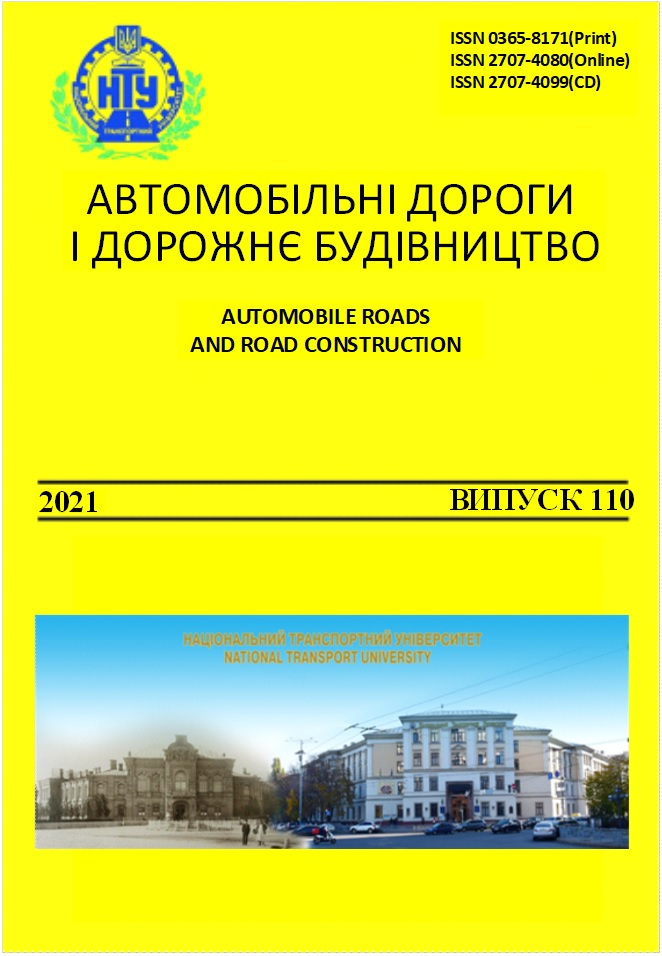Constraints of optimization of statistical analysis of data of engineerig monitoring of transport networks
Nikolai Kuzminets, National Transport University, chairman at Dept. of computer, engineering drawing and design, http://orcid.org/0000-0002-9636-919X
Yurii Dubovenko, National Transport University, senior teacher at Dept. of computer, engineering drawing and design, http://orcid.org/0000-0002-8128-5989
Abstract: Time series for the technical monitoring of the transportation networks include interference and omissions. Their analysis requires the special statistical analysis. Known statistical packages do not contain a full cycle for processing of large time series. The linear timeline for the processing of periodic data is not available in digital statistics.
The sliding window approach is suitable for processing of interrupted time series. Its disadvantage is the restriction on the length of the row and the sensitivity to data gaps. The graph of the time series processing needs the internal optimization. The necessary steps for optimizing of the time series processing graph are determined. They are as follows: store data in an internal database, build the data samples on a single time scale, sampling based on the meta-description of the series, averaging in a sliding window, calendar bindings and omission masks, generalization of graphs, storage of graphics in vector format and so on.
The conditions for the study of series are revealed such as the database, calendar structure of data, processing of the gaps, a package of numerical methods of analysis, processing in a sliding window.
Article language: English
Referenses:
- Yakimov I.M., Kirpichnikov A.P., Mokshin V.V., Mukhutdinov T.A., 2015. Simulation training in the Simulink package of the Matlab system. Bulletin of Kazan technol. univ. 18. 5: 184–188. (in Russian).
- Trofimov A.V., 2015.The time index is a criterion for assessing the impact of traffic load on the quality of its functioning. Bulletin of IrSTU. 10 (105): 181–185. (in Russian).
- Belenkiy A.V., 2008. Timelines that allow you to see the time. ComputerPress. 12: 5–12. https://compress.ru/article.aspx?id=19860 (in Russian).
- Glinchenko A.S., 2005. Digital signal processing [Text]: textbook / A.S. Glinchenko. 2nd ed., Revised. and add. Krasnoyarsk: PH KSTU, 234 (in Russian).
- Lychkina, NN, 2005. Simulation of economic processes: manual / NN. Lychina. Moscow. 220 p.
- Chuba M.V., Keleman I.N., Garanja I.A., Stasyuk A.F., Verbitsky Yu.T., Nishchimenko I.M., Plishko S.M., Verbitskaya O.Ya., Davydyak O.D., Oleinik G.I., Simonova N.A., Burlutskaya A.M., Evdokimova O.V., 2011. Catalog and detailed data on earthquakes in the Carpathian region for 2011. Seismologist. Bull. of Ukraine for 2011. Sevastopol, SPC "Ecosee-Hydrophysics", pp. 115–182. (in Russian).
- Bakhvalov N.S., Zhidkov N.P., Kobelkov G.M., 2008. Numerical methods. 5th ed. Moscow: Binom. (in Russian).
- Anderson T., 1976. Statistical time series analysis. 755 p. Moscow: Mir, (in Russian).
- Velichko V.V., 2016. Comparative analysis of statistical software packages. Innovative science. 5: 32–35. ISBN 2410-6070. (in Russian).
- Cooley James W. and Tukey John W., 1965. An algorithm for the machine calculation of complex Fourier series. Mathematics of Computation, p. 297–301.
- Shishov V.V., Ivanovsky A.B., 2006. Comparative analysis of moving synchronization coefficients in the analysis of time series. Bulletin of the Siberian state. Aerospace University by Academician M.F. Reshetnev. Pp. 29–33. (in Russian).
- Dubovenko Yu.I., Chorna O.A. On the ambiguity of 4D gravity monitoring of geological media. Геофізичний журнал. 2010. 32, № 4. C. 41–46.
- Dubovenko Yu.I., 2015. Notices on the strategy for creating of digital gravimetry databases in Ukraine. Geoinformatika. 4(56): 65–74. (in Russian).
Open Access: http://publications.ntu.edu.ua/avtodorogi_i_stroitelstvo/109/157.pdf
Online publication date: 25.02.2021
Print date: 01.02.2021
